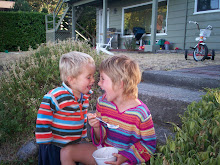Memories of Yokohama 2004
(first appeared in Her Sports 09/04)
From the moment my daughter was born, my priorities in life have gradually shifted. As an elite athlete balancing my life’s joys of running and parenting, I have to choose where to put my valuable energy resources. I stress less about various trivial details, while other broader issues have come more into focus. I have been fascinated by the paradox of athlete/motherhood: how to take care of my own needs and commitment to being in top form while at the same time feeling an organic compulsion to give up everything for the adorable child that I love so much. I don’t know if it’s motherhood, maturity or a combination of both, but when I travel to races these days, it is a with a real sense of consciousness and purpose.
It was serendipitous that an e-mail asking me to be a part of a National Team for the Yokohama Women’s Ekiden came across my desk. At the time, I was only four weeks into the new year of training: the tiring volume period of endurance running, and getting back into the swing of balancing my active three year old with my own training schedule. The chance to go alone to race in Japan, to stay in a luxury hotel, to train, write, walk, stretch, practice yoga and just “be” was just what I wanted. I said yes, and took care of the important childcare details afterwards, knowing that my husband loves to be the “go-to” guy when I am on the road.
The Ekiden is a road-racing format run frequently in Japan, and not so frequently elsewhere in the world. Ekiden means "relay”, and a team of six runners race between 5 and 10k in a leg to complete the marathon distance (42.2km). Runners pass a brightly coloured sash or “tasuki”, which loosely translated means "circle of friendship". I have been racing Ekidens on Canadian teams since my early days of international competition over fifteen years ago and the event is a special one, where runners from across the country are invited to be team-mates and to race together overseas. Being a relay there is a sense of shared responsibility and teamwork not found in other solo running events and there is the added opportunity to adapt and learn while preparing for personal excellence in an unfamiliar environment.
In Yokohama, we stayed at the Yokohama Intercontinental. Shaped like a wedge of Gouda, and with eight bars and restaurants, we were not roughing it at this race. The hotel is in the modern neighbourhood of Minato-mirai 21 (ports + future). The area is anchored by the solid and soaring Landmark tower, the hotel, and adjacent to that, the enormous Cosmic Clock 21, a sky high Ferris wheel that takes fifteen minutes for one revolution and goes around so gently that it doesn’t even stop to let passengers in out of the gondolas: the doors open and people just hop out onto the platform and several seconds later new passengers hop in.
On my first morning in Yokohama, I woke at 5AM and forced myself to lie in bed for another hour before making some green tea and stretching. When it was light enough I eagerly headed out for my run. I had stayed in this same hotel for the Ekiden in 1998, before Maia was born, and being a sentimental person, I love to revisit places from a different time of my life. Since arriving at the hotel I had felt in a fog of déjà vu, as if someone had erased some of my memory but not all of it. This memory lapse could be due to that childbirth phenomenon, although jet lag could account for some of it too. I did remember that to get to Yamashita Park, the compact park where we train, we used to have to thread our way through a construction zone, old warehouse sites, past chain link fences and across vacant lots besides the bay. Since my last trip an amazing transformation had taken place: the whole area is now an open network of walking paths and spacious squares.
From the boardwalk in front of the hotel, I ran across a restored train trestle, “Kishamichi Promenade”, past the Yokohama “World Porters” (This odd name stumped me until I ventured inside one morning: food and clothing and furniture shops galore!), around the Shinko Circle Walk and past the restored 100 year old Red Brick Warehouses, where our race was to eventually start and finish. From there I ran up and across the Yamashita Harbour Railroad promenade, then down a ramp into Yamashita Park. Yamashita Park is not big, but it is next to the sea and there is always a fresh breeze, it has wide boulevards, beautiful trees and marvellous sculpture. It was wonderful to come to Japan, and to be able to run beside the sea without having to cross a street once. In the days leading up to the race, it was common to see groups of six or seven foreign athletes, running back and forth along these pathways by the bay, and stretching in the small spare parks.
By midmorning on the first day, I was sitting at a Starbuck’s writing. I had a vague sensation of cheating: travelling halfway around the world should have precluded me from sniffing out my comforts of home. Interesting difference though, there is no Venti in Japan. Short, Tall and Grande are your choices, reflecting the smaller portion sizes characteristic of the country.
For most of my life, the day before race day has been a challenging mixture of anxiety and impatience: a desire to just get the show on the road! This year, I felt calm and relaxed the day before the race. I missed Maia and her lovely loving spirit, but it was with a sense of gratitude. For the first time I didn’t feel guilty or sad about being away. I thought about my home, my husband and my daughter and I felt lucky to have the life that I do. It filled my heart with peace and courage and in there I found the desire to run and perform, to make my own magic on the racecourse the next day.
Race morning was gloriously sunny, warm and very windy. My leg would be ten kilometres straight into the wind. We were briefed by the coaches again about the check-in process, reminded at how the Japanese officials would be strict about the formalities, our race numbers and the busses to our legs.
An hour and a half before my start, my bus parked beside a small dusty park that was already filled with people and officials in green coats. Some families were there playing on a playground and I had to suppress an urge to go and climb with them, to make friends with the children. The other runners on the bus, women from Japan, Yugoslavia, Ukraine and Russia, were all so serious. This is such an adventure and I smiled at them, but athletes have their game faces. Have I become less serious about sport, I think to myself, knowing what I do about family and children?
During my warm up I felt excited and suddenly nervous--nerves mean that I want to succeed and I became aware that I felt the pressure of running well for the team. As the first runners approached we were rounded up and hustled by officials to the exchange zone on the road; we heard the helicopter drawing closer and Japanese chattering with increasing tense and excited voices. For the athletes, we could only think about one thing: seeing our lead runner racing around the bend with the sash, and the start of our own leg.
The first runner appeared and the women jockeyed for position on the road in order to receive their sash. Not far behind the first runner, I saw my Canadian teammate, clearly in discomfort and with a grimace of exhertion on her face. I grabbed the crumpled up sash in my hand and sprinted off down the road after a Japanese woman who was a mere five seconds ahead. The wind on my leg was severe and I told myself how adverse conditions are a reason to rise to the challenge. All along the route, locals cheered and waved paper flags. I will always remember these races, by the rustle of a thousand paper flags and the occasional “Cah-nah-dah!”.
After ten kilometres of racing along pavement beside endless nondescript grey buildings, I flew down a hill towards another park and passed the sash to our next runner and on it went for 42 kilometres, our bright pink circle of friendship travelling through the streets of Yokohama. At the park, locals asked for our autographs, children peered at our racing shoes, our strange faces, and us. And then the officials rounded us up again; we hopped back on the bus to the finish. Hundreds of people crowded the finish area, and the massive Red Brick Warehouses rose high above the scene, historic and solid.
In the end, the fleet footed Ethiopians won the relay, beating out the National Team from Japan, and they were crowned with wreathes of ivy and flowers in front of the crowd. Not on the podium, we milled about with the locals in the square, getting photographed with children and smiling a lot.
The morning after the race I went for a quiet run by myself. There had been a strong wind and rainstorm the night before and Yamashita Park was wet and covered with bits of leaves and twigs. Running in the fresh sun and wind, relaxed, I noticed a small, statue “The Girl with the Red Shoes”. It reminded me of my own little girl and how much I love her. Racing and travel has always been about adding dimension to my life, about coping and finding peace and joy in foreign places. More than anything on this trip, I felt connected once again to these gifts of my running career.
Lucy Smith
March 2004
Subscribe to:
Post Comments (Atom)







1 comment:
Oh I am so thankful you posted this... In March I head to Australia with Coach Paul and some Lifesporters and leaving my son, Kainoa, has been killing me. I have been home sick and I haven't even left yet. it was refreshing to read that you too, leave for races without your children but love them no less. I needed this post and I think I will reread it over in OZ.
And, that little girl with the red shoes, reminded me of a book I read in High School... thanks for posting- you really encourage me!
Post a Comment